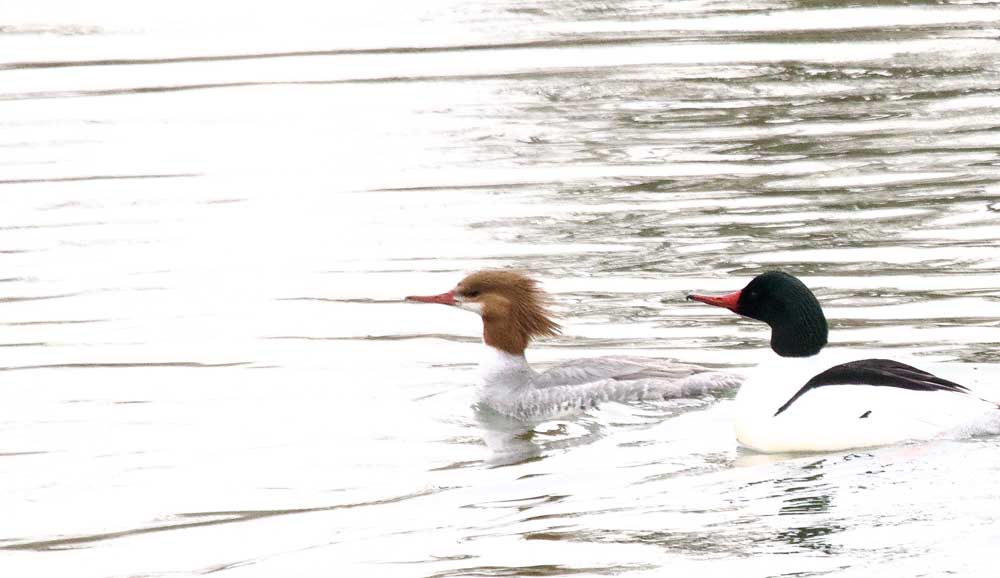Birding: Spotlight on the common merganser
Published 12:17 pm Wednesday, April 17, 2024

- The mated pair of common mergansers swam off together after the courtship and mating ritual was over.
Common mergansers are permanent residents on the Peninsula. They are designated as common to uncommon depending on the time of year. Thus, they are with us in every season, but not always easy to find. The common merganser is the largest of the three merganser species. The smallest is the hooded merganser. The red-breasted is in between in size. The common merganser, like other mergansers, is saw-billed and is an elegant fish-eating duck. Mergansers also enjoy aquatic invertebrates, frogs, small mammals, plants, and birds.
The female has a bright rusty-brown head with a shaggy crest, and she has a white chin patch and a sharp orangey-red bill. The male sports an iridescent blackish-green head, and an orangey-red hooked bill that is saw-toothed on the sides. He has a white breast and underparts.
The common merganser is a cavity nester but will use a nesting box. It will also nest on the ground. It nests from April to September but only has one brood. Common mergansers prefer freshwater lakes and rivers. They are rarely seen on the ocean but may be seen in saltwater estuaries in winter.
Females will often lay their eggs in other duck’s nest, including common goldeneye nests. I have witnessed this behavior as a female goldeneye and a female common merganser went in and out of the same nesting cavity. It has also been known to lay it’s eggs in a hooded merganser nest. Males usually leave the female during incubation and leave her to attend to the rearing and feeding of the young ducklings.
This photo essay illustrates the courtship ritual and behavior around it. It culminated with the mating of the two birds. However, there are other courtship features such as males chasing males and acting aggressively toward their rivals. Scientists call this a communal courtship display. The only sign of this behavior was the fact that two pair were swimming alongside of one another when, suddenly, one male went after the other. The chase was on. The photo essay shows what happened next.
Happy birding!








